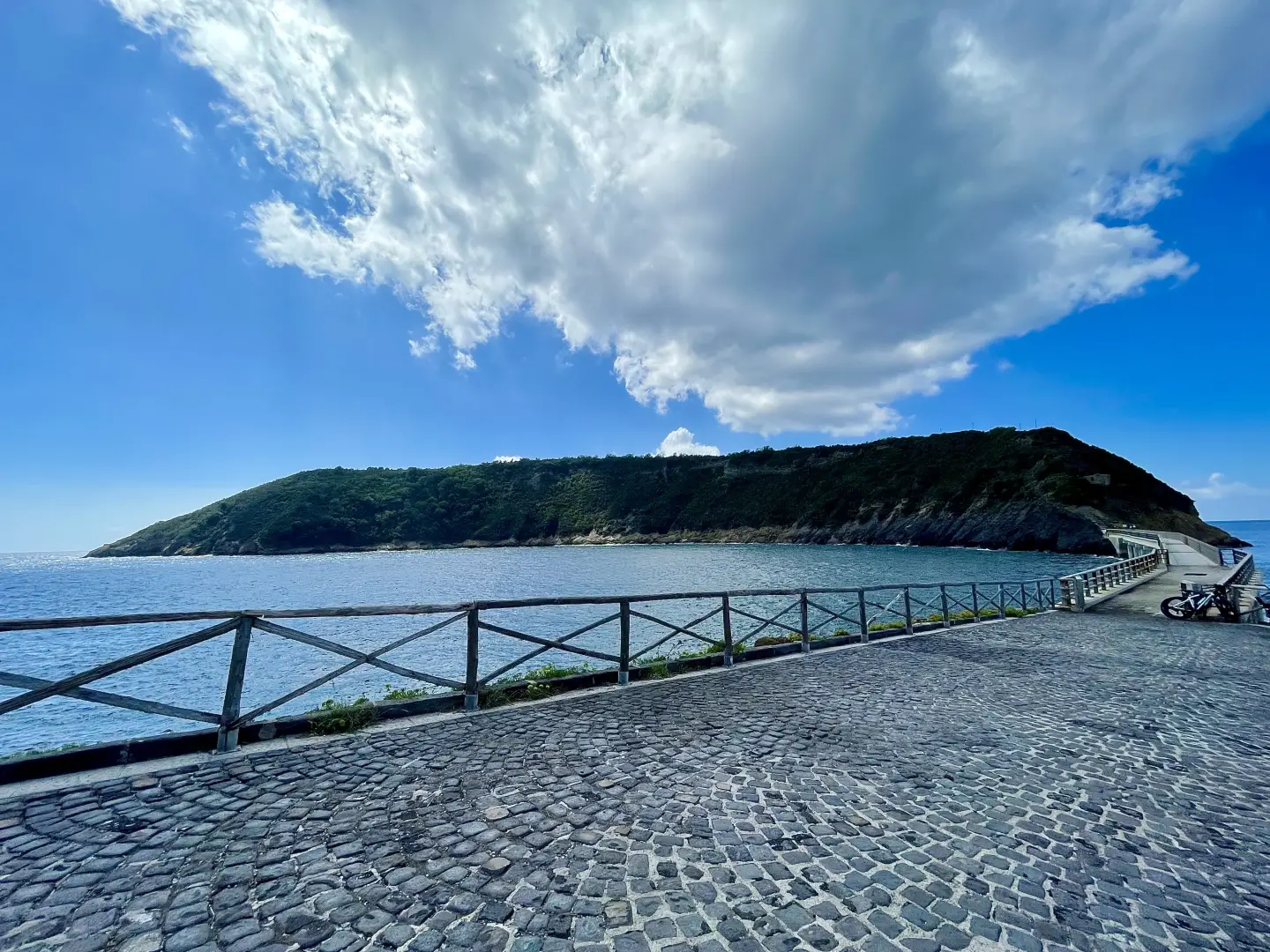Vivara Island

Description
--- AT THE MOMENT THE ISLAND OF VIVARA IS CLOSED TO THE PUBLIC ---
The island of Vivara, a mysterious and fascinating stretch of land connected to Procida by an old bridge, has been a protected nature oasis since 1974 and a state nature reserve since 2002. Small, wild and unspoilt Vivara is not only populated by rare plants, wild rabbits and numerous water birds, but is also home to important archaeological findings of Mycenaean origin. Its spectacular seabed, rich in marine plants, is also an attraction for all snorkelling and diving enthusiasts. Visiting Vivara is not yet possible, but it was announced a few weeks ago that it will soon be made accessible to all those who, during their holiday in Procida, want to discover this little paradise that has so far been little explored.
Vivara is what remains of a circular volcanic crater once linked to Procida by a cliff. Today, the islet is connected to the promontory of Santa Margherita (Marina Chiaiolella) by a bridge that can only be crossed on foot, and despite its small size - an area of 0.38 km2 and a perimeter of 3 km - the island offers a number of walkable paths with lush, unspoilt vegetation.
The only building on Vivara is the house built by Duke De Guevara in 1681, which became the 'Bourbon Hunting Lodge' adjoining the farmhouse. There is a splendid terrace from which it is possible to admire breathtaking views of nearby Ischia and the entire Campania coastline.
The visits can be made from Friday to Sunday at 11 a.m. and 3 p.m. with reservations and payment made no later than 48 hours prior to the day of the visit.
The visit, conducted with a nature guide authorised by the RNS Vivara Island, lasts about 1.30 hours and can be made from Friday to Sunday in two shifts: one at 11 a.m. and the second at 3 p.m.00 and the second at 15.00 by booking and paying within 48 hours before the day of the visit.
The island of Vivara is a small island located between Procida and Ischia, connected to Procida by a footbridge
. This small natural oasis was declared a state nature reserve in 2002 and offers a unique experience for trekkers and nature lovers
.To visit the island of Vivara, you can follow a moderately demanding hiking trail, which takes an average of 2 hours and 46 minutes to complete
. The trail offers an excellent opportunity to watch birds and enjoy the natural beauty of the island
.Start your itinerary from Procida, crossing the footbridge connecting the island of Vivara to the promontory of Santa Margherita - Marina Chiaiolella
. Once on the island, you can explore the trails and admire the local flora and fauna, including rare plants, wild rabbits and numerous waterfowl
.In addition to its unspoilt nature, Vivara is also home to important archaeological findings of Mycenaean origin
. The seabed around the island is spectacular and rich in sea plants, ideal for snorkelling and scuba diving enthusiasts
.However, it is important to note that the island of Vivara has been closed to the public for several years and its accessibility may be limited
. Before planning your visit, we advise you to check the latest information about access to the island and the guided tours available.If you cannot visit Vivara, you can still enjoy the beauty of the island of Procida through other hiking trails, such as the Pizzaco trail, the Solchiaro trail and the Vivara islet trail
. In addition, you can admire the island of Vivara from the sea, with a boat excursion or by hiring an inflatable boat
The path connecting Procida to the island of Vivara stretches along a 362-metre-long footbridge
. This bridge, built in July 1957, connects the two sister islands and offers an ancient, mysterious and fascinating aspect to the surrounding area
. To reach the path, you need to cross the footbridge from the Santa Margherita promontory at Marina Chiaiolella, located on the island of Procida
.Once you arrive on the island of Vivara, you will find a staircase that will lead you to the main path
. Despite the small size of the island of Vivara, with an area of 0.38 km² and a perimeter of 3 km, it offers a series of walkable paths with lush vegetation
.